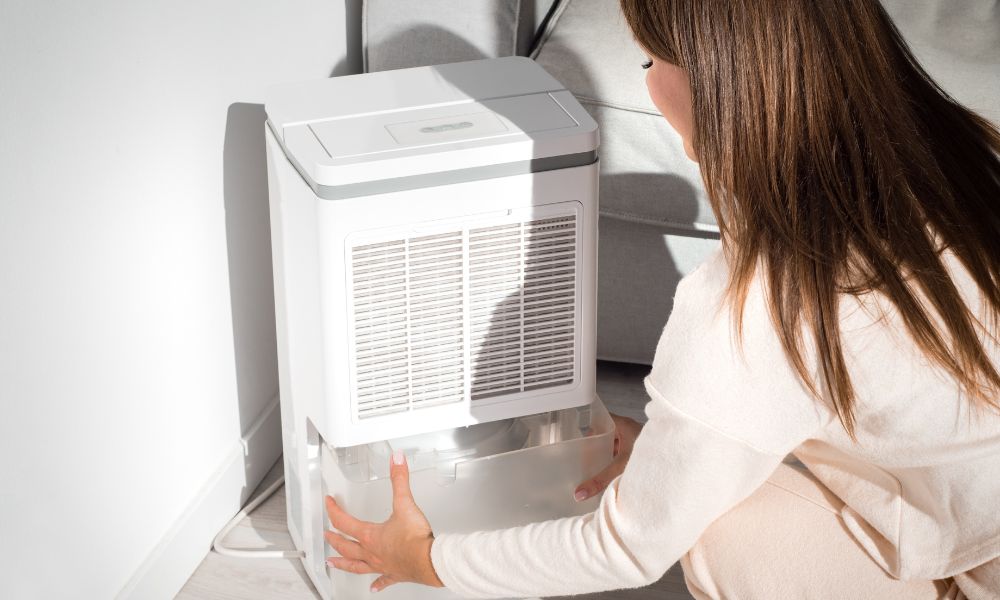
High moisture levels in your home can lead to various problems, such as mold, mildew, and health issues. If you’re having trouble with high humidity levels inside your home, you can do several things to reduce the moisture level and make your living space more comfortable.
Let’s explore some practical ways to reduce the moisture level in your home so you can enjoy a healthier and more comfortable environment.
Identify Leaks & Other Sources of Moisture
The first step is to identify potential sources of moisture that may be contributing to the problem. Look for leaks or condensation around windows, doors, and other fixtures that allow excess moisture into your home.
Check around any pipes or drains for signs of water damage or leakage. If you find any leaks or other sources of water intrusion, address them as soon as possible to minimize the impact on the moisture levels within your home.
Install a Dehumidifier
Installing a dehumidifier is an effective way to reduce humidity levels inside your home. Dehumidifiers work by drawing out warm air from the room and cooling it until it reaches the desired humidity level before returning it to the room.
This process creates a closed loop where moisture is continually extracted from the air within the room so that it doesn’t build up over time. It’s also important to keep an eye on areas prone to high humidity, such as bathrooms and basements. They are typically hotspots for excess water vapor accumulation due to their enclosed nature.
Ventilate Your Home
Another way to reduce excessive moisture indoors is by ventilating your home regularly. You can do this by opening windows during cooler times of the day or using exhaust fans when cooking or showering to quickly and efficiently remove hot, moist air from the environment without letting it linger and accumulate over time. Doing this will keep indoor air quality high while also preventing the buildup of humid air, which could cause health issues if left unchecked for too long.
Reducing indoor humidity is important for comfort and health reasons since excess moisture can cause mold growth, leading to respiratory issues if neglected for long enough. It is also one of the many ways to prevent and repair wood rot to maintain the integrity of your home.
By taking steps such as identifying sources of leakage, installing dehumidifiers, and ventilating regularly, you can ensure humidity levels remain low inside your home and that you avoid potential health risks associated with high indoor humidity levels. Homeowners should take action now if they suspect their homes are experiencing higher-than-normal indoor humidity levels. Doing so will prevent any further damage caused by excessive water vapor accumulation inside their living spaces.
